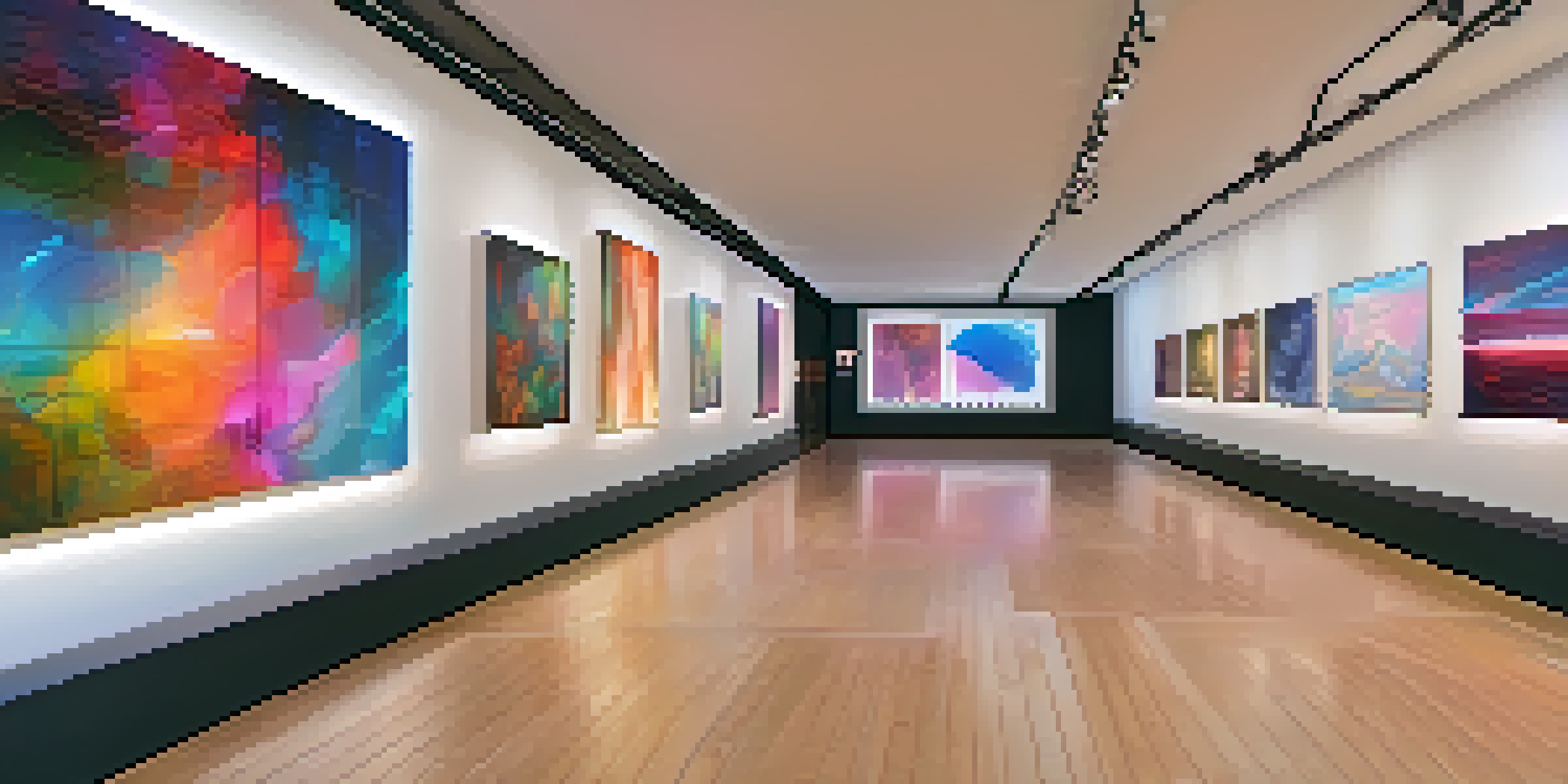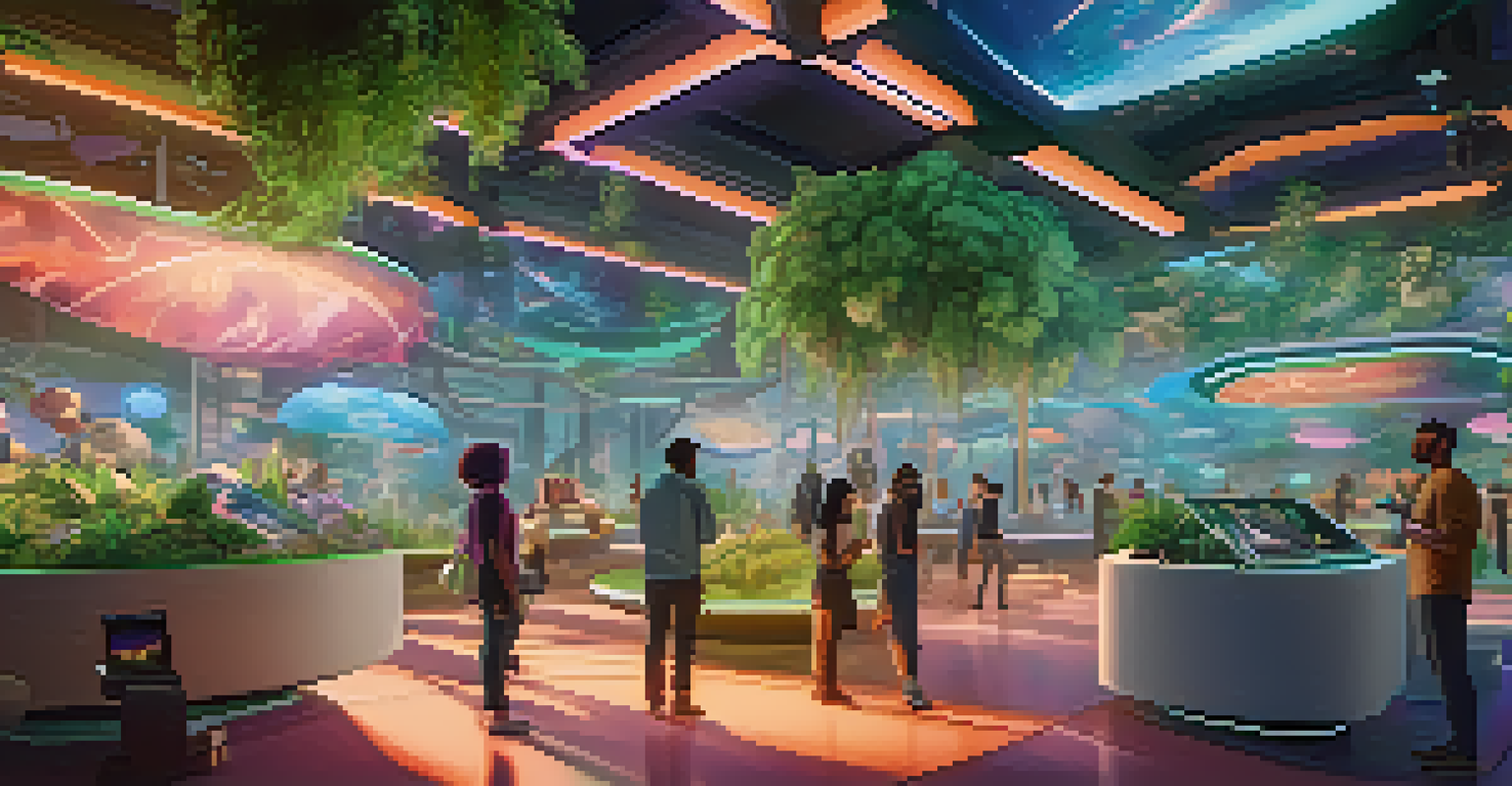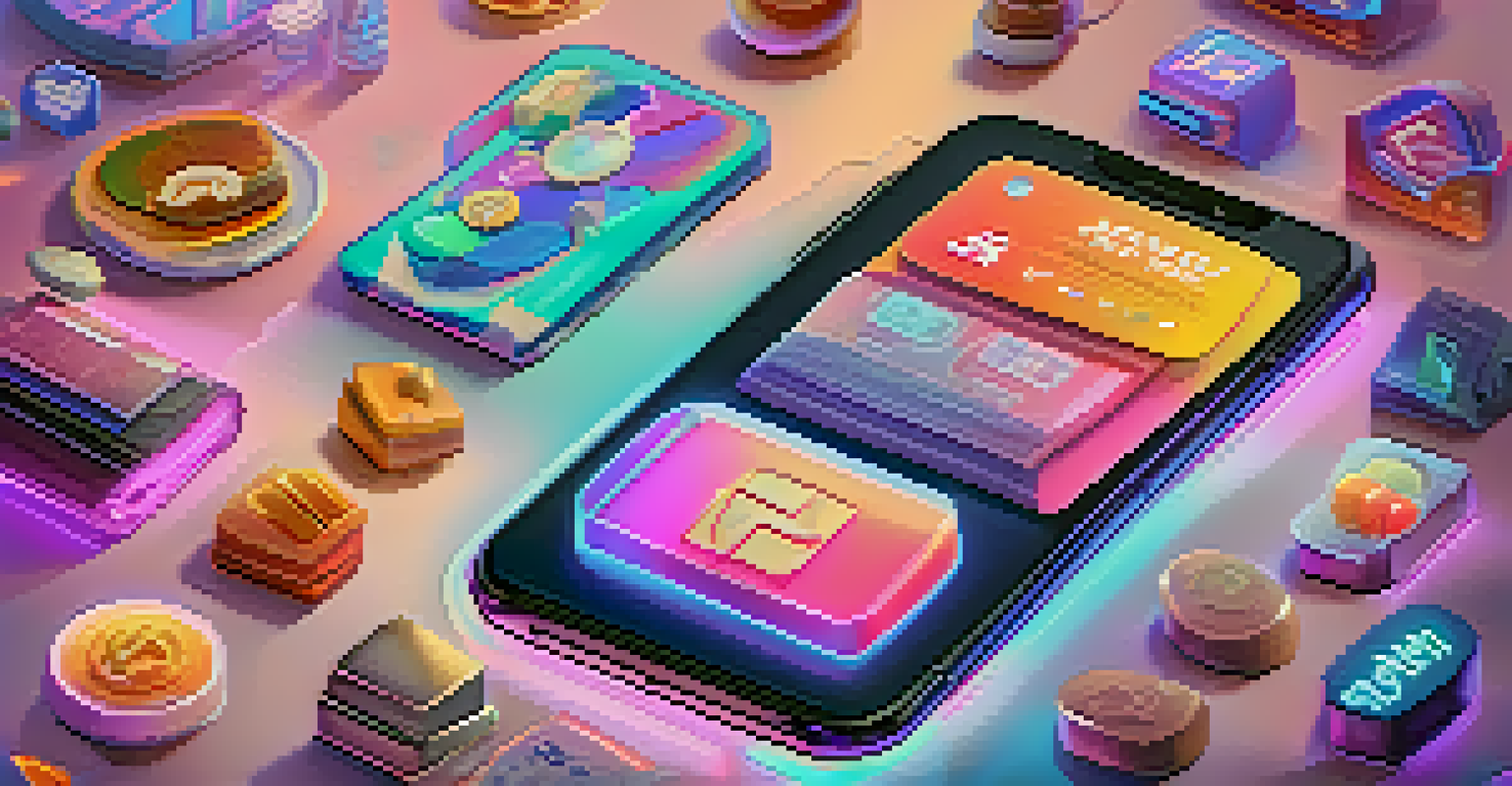NFTs as Digital Collectibles in Virtual Reality Worlds

Understanding NFTs: What They Are and Why They Matter
NFTs, or Non-Fungible Tokens, are unique digital assets that represent ownership of a specific item or piece of content, often verified through blockchain technology. Unlike traditional currencies, which are interchangeable, NFTs are one-of-a-kind, making them perfect for digital collectibles. This uniqueness has sparked interest across various industries, from art to gaming, as creators and collectors alike explore the possibilities of ownership in the digital realm.
The future is already here — it's just not very evenly distributed.
Imagine owning a one-of-a-kind piece of digital art or a rare in-game item that no one else can replicate. That’s the power of NFTs—they provide proof of authenticity and ownership that is easily verifiable. This has opened up new avenues for artists and creators to monetize their work, while collectors can invest in digital assets that may increase in value over time, much like physical collectibles.
While the concept of owning digital items may seem abstract, the growing popularity of NFTs indicates a shift in how we perceive ownership. As these tokens gain traction, they are starting to reshape our understanding of value in the digital world, paving the way for exciting developments in the realm of virtual reality.
The Rise of Virtual Reality Worlds and Their Impact
Virtual reality (VR) worlds have become increasingly popular, providing immersive experiences that allow users to interact with digital environments as if they were real. These virtual spaces, such as Decentraland and The Sandbox, enable users to create, share, and trade digital assets, including NFTs. As people spend more time in these virtual realms, the demand for unique digital items has surged, blending the physical and digital worlds.

In these VR environments, NFTs serve as a bridge between technology and creativity, allowing users to showcase their collections, decorate virtual spaces, or even host events. Imagine walking through a virtual gallery filled with digital artwork, each piece represented by an NFT that verifies its authenticity. This blend of interaction and ownership creates a vibrant community where collectors can appreciate and transact in real-time.
NFTs Redefine Digital Ownership
NFTs provide a unique way to prove ownership of digital assets, transforming how we perceive value in the digital realm.
Moreover, the integration of NFTs into VR worlds enhances user engagement and fosters a sense of belonging. As players invest in their virtual identities by acquiring unique items, they create narratives and experiences that are deeply personal, making their time in these spaces even more meaningful.
How NFTs Enhance the Collecting Experience in VR
NFTs add a new layer of excitement to the collecting experience in virtual reality. Collectors can not only own unique digital items but also display them in their virtual spaces, turning their collections into interactive showcases. This transforms the act of collecting from a solitary activity into a social experience where others can appreciate and admire one’s collection, similar to visiting a physical gallery.
Digital art is just as valuable as physical art, and NFTs are proving that ownership can exist in the digital realm.
In VR, collectibles can have functionalities beyond mere visual appeal. For example, a virtual pet NFT might interact with other users, or a virtual home could serve as a hub for hosting gatherings. This interactivity makes owning NFTs in VR worlds even more enticing, as collectors can engage with their items in various ways, enhancing the overall experience.
The ability to trade or sell NFTs within these virtual environments further empowers collectors. Just like in traditional collectibles markets, the value of digital items can fluctuate based on demand, rarity, and trends, making the collecting experience dynamic and exciting. This fluidity creates a sense of community as collectors share tips and experiences, fostering relationships that transcend the digital divide.
The Role of Communities in Shaping NFT Trends
Communities play a crucial role in the success and evolution of NFT trends in virtual reality. As users gather around shared interests, they contribute to the creation and promotion of certain NFTs, influencing what becomes popular or valuable. This communal aspect not only helps drive demand for specific digital collectibles but also fosters a sense of belonging among participants.
Platforms like Discord and Twitter have become vital spaces for collectors and creators to connect, discuss, and share their experiences with NFTs. These communities often host events, giveaways, and discussions that can spark interest in particular NFT projects, leading to viral trends within the virtual reality ecosystem. The power of community-driven engagement cannot be overstated in shaping the future of digital collectibles.
VR Enhances Collecting Experiences
Virtual reality worlds allow users to interact with and showcase their NFT collections, turning collecting into a social and immersive experience.
Furthermore, the collaborative nature of these communities encourages innovation. As users share ideas and feedback, creators are inspired to develop new types of NFTs that cater to the evolving tastes and preferences of their audience. This constant dialogue not only enriches the NFT landscape but also ensures that it remains dynamic and responsive to the needs of its users.
Challenges and Considerations in the NFT and VR Space
While NFTs and virtual reality present exciting opportunities, there are also challenges that users and creators must navigate. Issues such as copyright infringement, environmental concerns regarding blockchain technology, and market volatility can complicate the landscape. As NFTs grow in popularity, it’s essential for participants to remain informed and vigilant about these challenges.
The environmental impact of blockchain technology, particularly proof-of-work systems, has raised concerns among environmentally-conscious users. Many are advocating for more sustainable alternatives, such as proof-of-stake, which can reduce the carbon footprint associated with NFT transactions. As the industry matures, finding solutions to these challenges will be crucial for the long-term viability of NFTs in virtual reality.
Moreover, the speculative nature of the NFT market can lead to significant fluctuations in value, making it a risky investment for collectors. Understanding market trends and conducting thorough research is essential for anyone looking to dive into this space. By being aware of these challenges, users can make informed decisions and contribute to a healthier ecosystem.
The Future of NFTs in Virtual Reality Worlds
As technology continues to evolve, the future of NFTs in virtual reality worlds looks promising. We can expect to see more sophisticated and versatile NFTs that offer unique experiences, such as gamified elements or interactive storytelling. This innovation will likely attract a broader audience, expanding the appeal of digital collectibles beyond niche markets.
Additionally, collaborations between creators, brands, and platforms may lead to more mainstream adoption of NFTs in virtual reality. Imagine a popular game collaborating with an artist to create exclusive NFTs that enhance gameplay, or a fashion brand offering virtual clothing items as NFTs that users can wear in their avatars. These partnerships can create exciting opportunities for both creators and consumers alike.
Community Drives NFT Trends
Communities play a crucial role in shaping NFT trends, fostering collaboration and innovation among creators and collectors.
Ultimately, the integration of NFTs into virtual reality will continue to redefine the concept of ownership and community in the digital space. As more users engage with these technologies, the future will likely see a thriving ecosystem of digital collectibles that further enriches our virtual experiences.
Getting Started with NFTs in Virtual Reality: A Guide
If you're intrigued by the world of NFTs and want to dive into virtual reality, getting started is easier than you might think. First, choose a VR platform that suits your interests, such as Decentraland or The Sandbox, and create an account. Most platforms provide user-friendly tutorials to help you navigate your new virtual environment, making it accessible for beginners.
Next, you’ll need a digital wallet to store your NFTs. Popular wallets like MetaMask allow you to buy, sell, and trade NFTs securely. Fund your wallet with cryptocurrency, which is often required for transactions in the NFT space. Once your wallet is set up, you can explore marketplaces where NFTs are sold, such as OpenSea or Rarible, to find collectibles that catch your eye.

Finally, engage with the community! Participate in forums, join social media groups, and attend virtual events to learn from fellow collectors and creators. The more you interact, the better you'll understand trends and tips for building a successful NFT collection in the world of virtual reality. Remember, the journey is just as important as the destination, so have fun exploring this vibrant landscape!